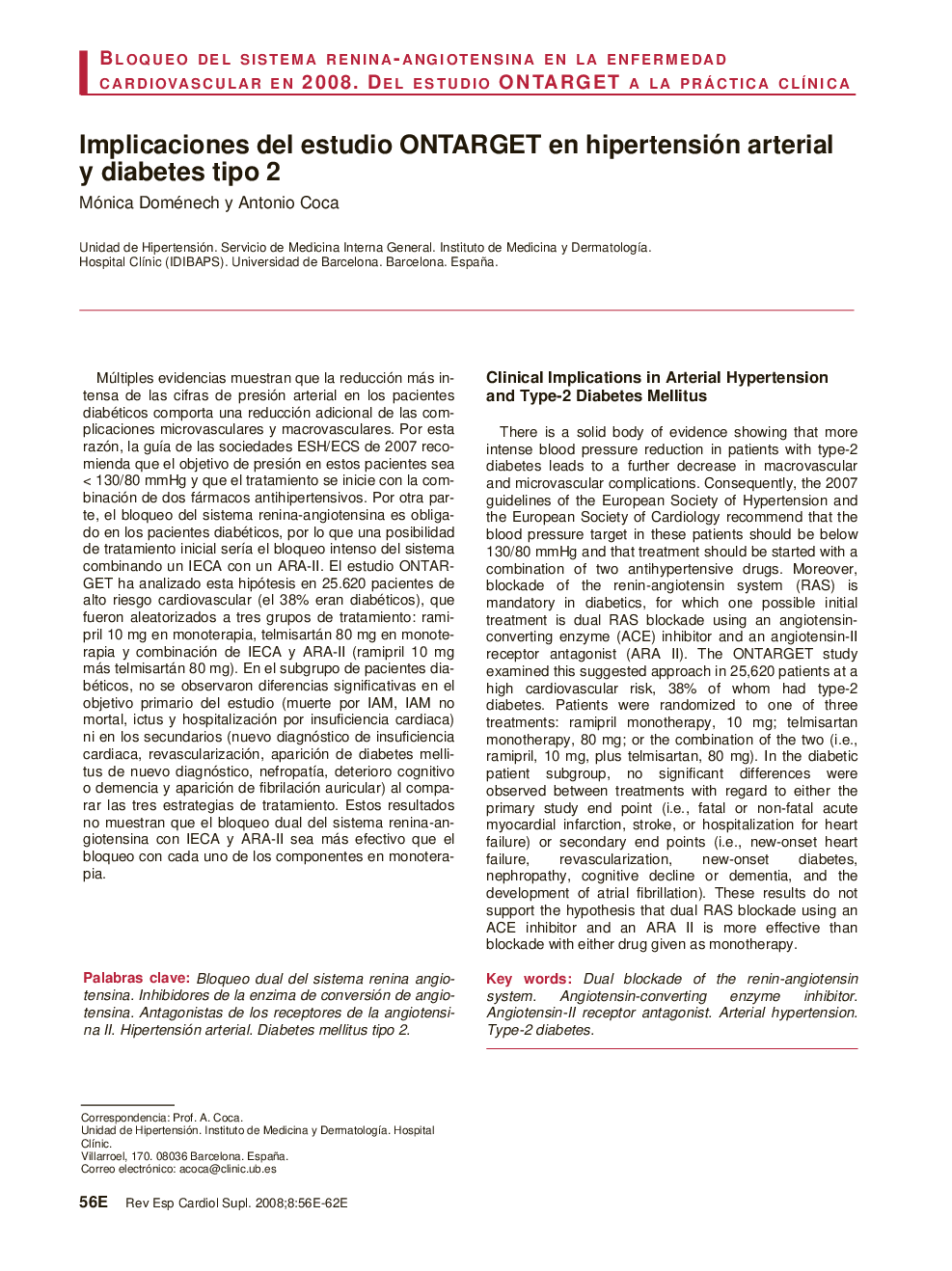| Article ID | Journal | Published Year | Pages | File Type |
|---|---|---|---|---|
| 3019656 | Revista Española de Cardiología Suplementos | 2008 | 7 Pages |
Abstract
There is a solid body of evidence showing that more intense blood pressure reduction in patients with type-2 diabetes leads to a further decrease in macrovascular and microvascular complications. Consequently, the 2007 guidelines of the European Society of Hypertension and the European Society of Cardiology recommend that the blood pressure target in these patients should be below 130/80 mmHg and that treatment should be started with a combination of two antihypertensive drugs. Moreover, blockade of the renin-angiotensin system (RAS) is mandatory in diabetics, for which one possible initial treatment is dual RAS blockade using an angiotensin-converting enzyme (ACE) inhibitor and an angiotensin-II receptor antagonist (ARA II). The ONTARGET study examined this suggested approach in 25,620 patients at a high cardiovascular risk, 38% of whom had type-2 diabetes. Patients were randomized to one of three treatments: ramipril monotherapy, 10 mg; telmisartan monotherapy, 80 mg; or the combination of the two (i.e., ramipril, 10 mg, plus telmisartan, 80 mg). In the diabetic patient subgroup, no significant differences were observed between treatments with regard to either the primary study end point (i.e., fatal or non-fatal acute myocardial infarction, stroke, or hospitalization for heart failure) or secondary end points (i.e., new-onset heart failure, revascularization, new-onset diabetes, nephropathy, cognitive decline or dementia, and the development of atrial fibrillation). These results do not support the hypothesis that dual RAS blockade using an ACE inhibitor and an ARA II is more effective than blockade with either drug given as monotherapy.
Keywords
FEVINYHAARA-IIUKPDSIECAABCDantagonistas de los receptores de la angiotensina IICHARMSecureHOPEInfarto agudo de miocardioSrahotDiabetes mellitus tipo 2Type-2 diabetesSistema renina-angiotensinaHipertensión arterialarterial hypertensionUnited Kingdom Prospective Diabetes StudyIAMInhibidores de la enzima de conversión de angiotensinaangiotensin-converting enzyme inhibitorScoreADVANCEfracción de eyección del ventrículo izquierdo
Related Topics
Health Sciences
Medicine and Dentistry
Cardiology and Cardiovascular Medicine
Authors
Mónica Doménech, Antonio Coca,
